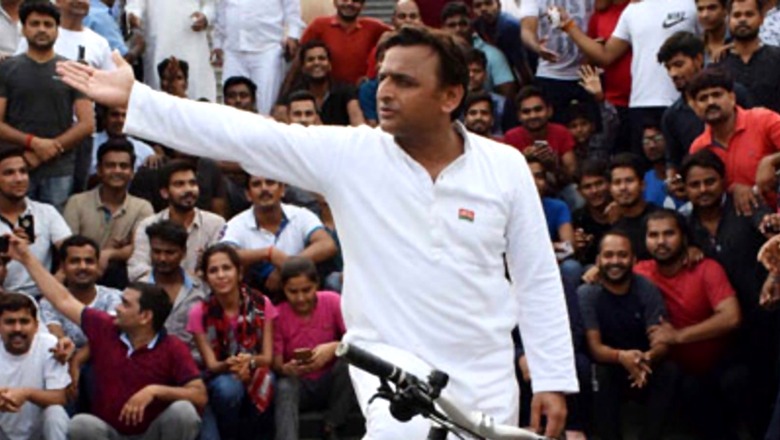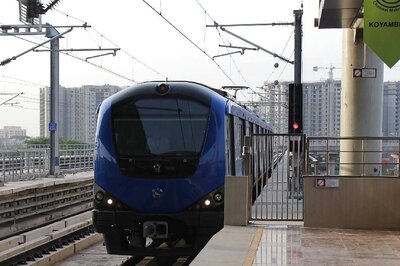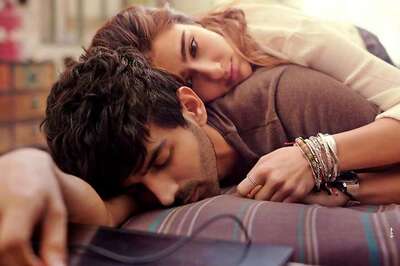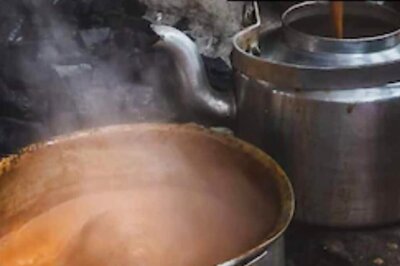
views
Caste loyalties are never cast in stone in Uttar Pradesh, except in very rare instances. This is why every political player is forced to rearrange its formula before an election, regardless of whether an equation it had worked out in a preceding poll paid off or not. The Brahmins, who formed the foundation of the Congress’s uninterrupted success in UP for decades, deserted the party; the Yadavs, the backbone of the Samajwadi Party (SP), had second thoughts about voting it since 2014; and even the Jatavs, synonymous with the Bahujan Samaj Party (BSP), wavered in the era of the BJP’s dominance. In the prelude to the 2022 assembly elections, it’s the BJP that’s feeling the pinch because its Brahmin supporters have become manifestly restive with the Yogi Adityanath regime for various reasons.
The SP was the first to spot Brahmin support for the BJP slipping through the cracks in a massive wall that the saffron party had built in 1989 with a shrill pitch for Hindutva and the promise to “liberate” the site of “Ram’s birthplace” at Ayodhya. In a political phase in which Mandal and backward caste (BC) empowerment were as overwhelming as a pan-Hindu identity, the BJP seized the pulse and began promoting BC leaders, careful not to lose sight of its agenda to forge a “pan-Hindu” identity. The Brahmins weren’t exactly thrilled when Kalyan Singh, a BC Lodh-Rajput, was picked as the chief minister over Kalraj Mishra after the 1991 elections but they lived fairly comfortably with the BJP’s experiment to fuse Mandir and Mandal.
The SP, identified wholly with the Yadavs, began to promote the Brahmin leaders in its ranks once the community voiced its disillusionment with certain moves and policies of the Adityanath government such as scrapping a public holiday on “Parshuram Diwas” and packing the institutional domains with Rajputs—the community to which the CM belongs—and marginalising Brahmins. The moves grated on Brahmins the most because, according to an analysis of the 2017 elections by the Centre for Study of Developing Societies, 82 per cent Brahmins had voted for the BJP. In the absence of a caste census, at best it is possible to arrive at reasonable guesstimates of a community’s population, discounting the tendency of each caste grouping to exaggerate their number. Brahmins are said to constitute between 10 and 12 per cent of the population while Rajputs are 7 to 8 per cent. Yet every BJP Brahmin privately pointed out that while the Rajputs had five cabinet ministers including the CM, there were “only” four Brahmin representatives. This is why the SP and the BSP have used “proportional” share of power as a sales pitch to draw in Brahmins.
ALSO READ | UP Next: Why Akhilesh Yadav and Mayawati are Wooing Brahmins
SP president Akhilesh Yadav mobilised the better-known Brahmins in his party, notably the former assembly Speaker Mata Prasad Pandey (who was roughed up while campaigning in the recent panchayat polls), national secretary Abhishek Mishra and former legislators Pawan Pandey, Sanatan Pandey and Santosh Pandey, and launched a string of “prabuddh sammelan” (intellectual meet), starting August 24 at Ballia. Interestingly, while the SP took care to groom Brahmins, when it came to reaching out to the Dalits, the party and its ally, the Rashtriya Lok Dal (RLD), were bereft of leaders and had to rope in Prashant Kanojia, the journalist who was twice incarcerated for allegedly tweeting “offensive” posts against the Adityanath establishment. The mismatch reflects on the bias of the SP and RLD.
Mayawati relied on the BSP’s general secretary and Rajya Sabha member Satish Chandra Mishra to reach out again to the Brahmins. While Mishra delivered results in 2007 (of the 51 tickets given to Brahmins, 20 won), it remains to be seen if his effort to woo back the community on the plank of giving tickets proportional to their population works. Over the years, Brahmins have shed their animosity towards the SP and BSP because they realised that while these parties pandered excessively to their core voters, they did not work against the community.
Why are the SP and BSP assiduously courting Brahmins as though their political existence depended on them? Obviously, the leaders see that there is a churn in the community and, therefore, an opening to augment their votes that both parties badly need to. But the deeper political and social context is located in the influence Brahmins pull, despite being smaller in number in UP than neighbouring Uttarakhand.
That context is defined in the village “chaupal” or public square and a city’s town hall. Come evening, the “chaupal” is animated with a Brahmin priest or a senior holding forth on life and times; but UP being UP, the speakers mostly expatiate on politics of every kind, from the local to international. The others hear him out silently, and rarely ever question because Brahmins are regarded as the traditional repository of wisdom. People listen, maybe a few are swayed but in the end, they vote according to their predilection. The same is re-enacted in a city or town’s social venues. While the era when Brahmins moulded the opinions of a significant section of the electorate is gone, the community members too have figured out that even the BJP is unlikely to endow them with a chief minister from their caste. Therefore, the community, like most others, has become pragmatic and goes with the party which it believes best serves its interests.
Of course, much depends on candidate selection and whether the BSP, for instance, puts its “bhagyadari” precept into practice. Until then, it’s open season for UP’s parties.
Radhika Ramaseshan is a senior journalist. She was the political editor at The Telegraph. The views expressed in this article are those of the author and do not represent the stand of this publication.
Read all the Latest News, Breaking News and Coronavirus News here.

















Comments
0 comment